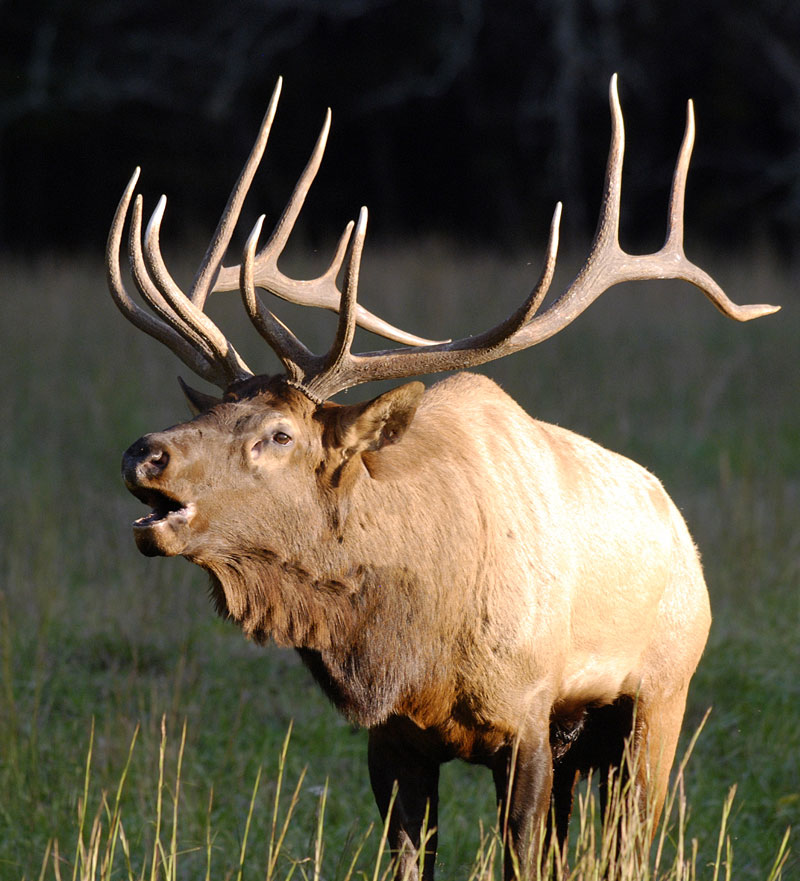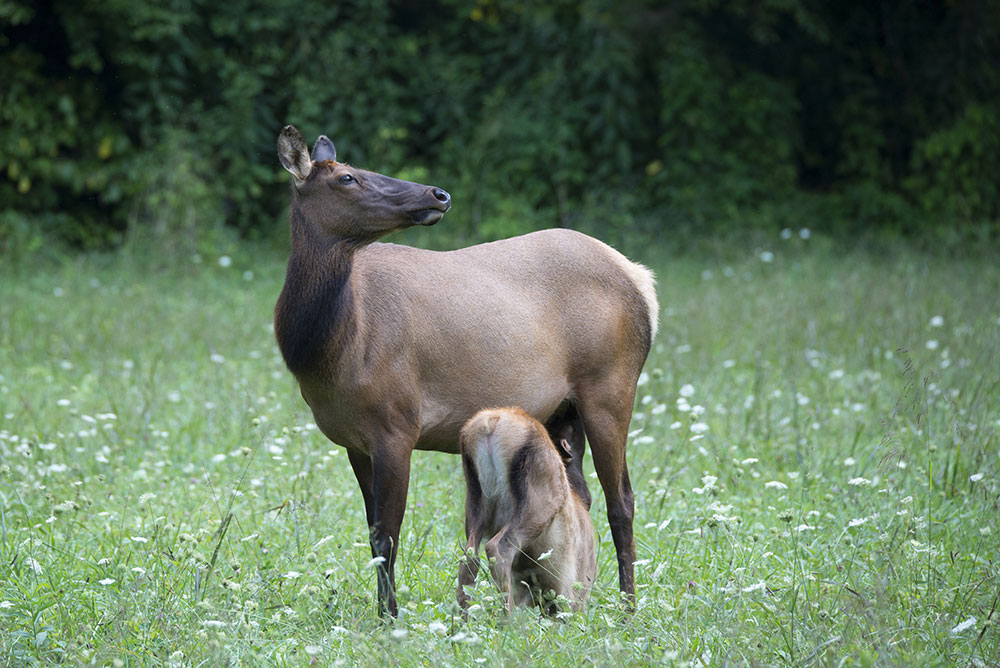By 2010, ten years after Elk had been reintroduced to the Great Smoky Mountains National Park, park officials were concerned that the herd population might never grow in size. Calves were being born but two out of three were not surviving the first year, mostly the result of black bears preying on newborns.
The Smokies’ fledgling elk herd had been relocated from wildlife refuges in Kentucky and Canada where bears were not a threat. So cows felt safe giving birth in fields and pastures as they had done for generations. But with an estimated 1,500 black bears in the Great Smoky Mountains National Park, the herd’s future was uncertain.
Writing in the latest issue of Smokies Life, author David Brill and GSMNP Wildlife biologist Joe Yarkovich relate the story of “cow number 15” and how she helped ensure the Smokies herd’s future. Brill wrote:
“She had been brought in from Land Between the Lakes, and the first year she had her calf out in the fields of Cataloochee, and it was killed by a bear,” Yarkovich says. The second year, she moved from the middle of the field to the edge of the wood line to give birth to her offspring, but, again, a bear killed her calf. “But in the third year, she traveled from Cataloochee six miles and 5,000 feet to [the more densely forested] Balsam Mountain and had her calf up there. It survived, and she brought it back down to the valley.”
“Following the successful evasive maneuver, cow number 15 annually ascended to Balsam Mountain to give birth and taught her female offspring to do the same.”
While cow number 15’s story was documented with a tracking collar, all of the herd’s mothers eventually learned ways to defend their calves, often by aggressively confronting attacking bears. Today, the herd is showing a consistently positive growth rate, according to Joe Yarkovich.
Today, 20 years after the initial 52 elk were released in the park, the herd has grown to an estimated 200 elk with about half found within the Great Smoky Mountains National Park. Elk are highly mobile and move freely throughout the mountainous Western North Carolina region.
READ: David Brill’s 14-page article ‘A Graceful Giant Makes a Successful Return’ in the new fall issue of Smokies Life magazine (Vol. 15#2), available at all GSMNP visitor centers and online at Great Smoky Mountains Association’s official park store.

The Fall Rut
Autumn is a special time in the Great Smoky Mountains National Park. In addition to the beautiful fall colors, fall also brings the rut, the annual mating season for the elk. With the bull elks’ bugling echoing through the valleys, this is one of the most popular seasons for elk watching. But from a distance.
The fields at Oconaluftee and Cataloochee are closed throughout September and October, but viewing is permitted from the roadside. Use binoculars, telephoto lens, or a spotting scope to view the animals. Willfully approaching within 50 yards, or any distance that disturbs or displaces elk, is illegal in the park and subject to fines and arrest. Park volunteers called the Bugle Corps patrol up and down the road educating visitors and trying to help them stay the recommended distance from the elk.
Where can you see elk in the Smoky Mountains? You can find more information with a quick visit to the Elk Watching page on GreatSmokies.com.



